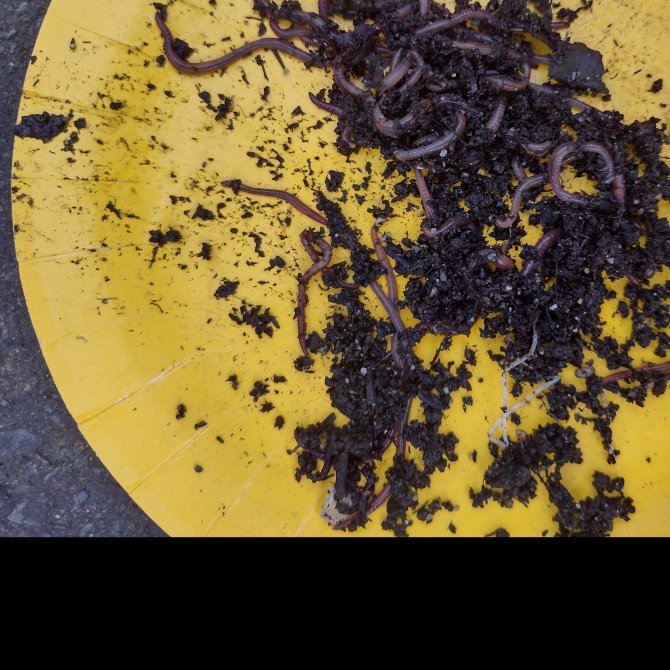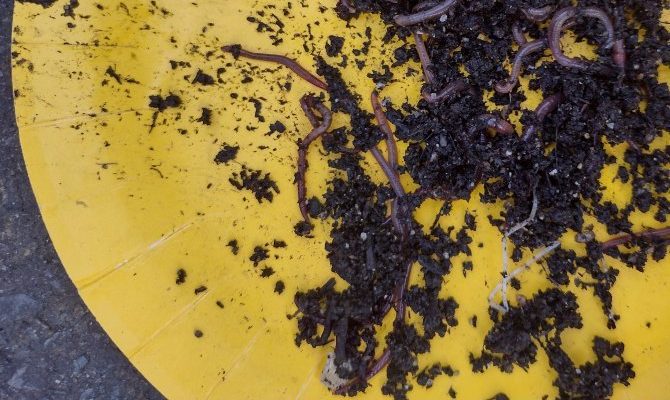
Now, you might be wondering how these little guys make such a big difference. Let’s dig deep into the world of earthworms and explore their role in vermicomposting. It’s fascinating how a few inches of soil can hold so much life and potential, isn’t it? Whether you’re starting a compost bin at home or just curious about nature’s recyclers, understanding earthworms can open up a whole new perspective on waste and gardening.
What Is Vermicomposting?
Vermicomposting is a method of composting that uses specific types of earthworms to break down organic waste into nutrient-rich compost. It’s like having a mini ecosystem right in your backyard or even indoors! Instead of tossing kitchen scraps like vegetable peels and coffee grounds into the trash, you can feed them to earthworms. As they munch on this organic material, they produce worm castings, which is essentially worm poop—packed with nutrients.
You may be surprised to know that this “worm poop” is actually a fantastic fertilizer for your plants. It’s rich in nitrogen, phosphorus, potassium, and other essential micronutrients. So, instead of just recycling materials, you’re also creating a natural fertilizer that will help your plants grow stronger and healthier. It’s a win-win situation for both you and the environment.
The Types of Earthworms Used in Vermicomposting
Not all earthworms are created equal when it comes to composting. The best ones for vermicomposting are usually red wigglers, scientifically known as *Eisenia fetida*. These little guys are champions when it comes to digesting organic matter. They thrive in the warm, moist conditions of a compost bin, making them perfect for your composting needs.
Another popular choice is the European nightcrawler, or *Eisenia hortensis*. Though not as efficient as red wigglers, they can still be effective in creating compost. They tend to grow larger and can be used in outdoor compost piles as well. You might find that these earthworms have personality traits, too! Red wigglers are more active and curious, while nightcrawlers are a bit slower but great for bigger tasks.
When starting your vermicomposting journey, it’s essential to choose the right type of earthworm. Red wigglers tend to be favored because they reproduce quickly and eat a lot, which means faster compost production.
Setting Up Your Vermicomposting Bin
Creating a vermicomposting bin is easier than you might think! First, you’ll need a suitable container. Many people use plastic bins, but wooden boxes work, too. Make sure your bin has enough holes for ventilation. Think of it as creating a cozy home for your earthworms—something they’ll love and thrive in.
Here’s a simple step-by-step process to get started:
- Choose a container: A bin about 2 feet long, 1 foot wide, and 1 foot deep is great. Just make sure it’s dark since earthworms hate light.
- Prepare bedding: Use shredded newspaper, cardboard, or coconut coir to create a soft bedding material. Moisten it, but don’t soak it! Earthworms like it damp, like a wrung-out sponge.
- Add your worms: Once the bedding is ready, gently add your red wigglers. Give them a few days to acclimate before you start feeding them.
- Start feeding: Gradually add kitchen scraps. Remember, they love fruits and veggies, but avoid meat, dairy, and oily foods.
Your worms will appreciate the effort, and soon, you’ll see them turning that waste into valuable compost!
Benefits of Vermicomposting
Vermicomposting isn’t just about reducing waste; it has a range of benefits that can positively impact your gardening and the environment. First, it helps divert organic waste from landfills, where it would otherwise contribute to methane emissions—a major greenhouse gas. Instead, you’re turning potential waste into rich, usable compost!
Another significant benefit is the improvement of soil health. Once you start incorporating worm castings into your garden or potted plants, you’ll notice how much more vibrant and healthy they can become. It enhances soil structure, promotes beneficial bacteria, and improves moisture retention. In short, it’s like giving your plants a superfood!
Additionally, vermicomposting is an inexpensive way to obtain high-quality fertilizer. Instead of spending money on commercial fertilizers filled with chemicals, you’re creating your own organic alternative. This not only saves you money but also provides peace of mind knowing exactly what you’re putting into your garden.
Common Challenges in Vermicomposting
While vermicomposting is relatively straightforward, you might encounter a few challenges along the way. One common issue is overfeeding your worms. When you give them too much food, it can lead to odors and attract pests. It’s essential to start slow and monitor how quickly your worms consume the scraps.
Another challenge can be maintaining the right moisture level. If the bin becomes too wet, it can create a soggy environment that’s not ideal for worms. On the other hand, if it’s too dry, your little friends may struggle to thrive. Aim for a balance—think of it as the Goldilocks principle; not too wet, not too dry, just right!
Lastly, temperature is crucial. Worms thrive at temperatures between 55°F and 77°F (13°C to 25°C). Extreme cold or heat can stress them out. If you live in a particularly hot or cold climate, consider placing your bin in a shaded area or indoors to keep the worms comfortable.
Understanding Worm Castings and Their Uses
So, what are worm castings, and why are they so revered in gardening? Worm castings are the result of earthworms digesting organic matter. They contain beneficial microorganisms that help plants absorb nutrients, essentially turning them into supercharged fertilizer.
You can use worm castings in various ways:
- Soil amendment: Mix worm castings into your garden soil to improve fertility.
- Potted plants: Add a layer of worm castings to the top of your potted plants, allowing nutrients to seep down with watering.
- Liquid fertilizer: Steep worm castings in water to create “worm tea,” a nutrient-rich liquid that can be used to water plants.
The beauty of worm castings is that they are slow-releasing. This means that unlike synthetic fertilizers, the nutrients don’t leach out quickly. Your plants can take their time absorbing what they need, leading to healthier growth over time.
Getting Started with Vermicomposting at Home
Ready to dive into vermicomposting? Getting started at home is rewarding and a fantastic way to engage with nature. Begin small; you don’t need to go out and buy a ton of worms or fancy equipment. Just take it step by step.
Start by collecting your kitchen scraps. Remember to stick to fruit and vegetable waste, along with coffee grounds and eggshells. Once you have your setup ready with the bedding, worms, and scraps, it’s time to watch the magic happen.
As your compost starts to break down, you’ll feel a sense of accomplishment. It’s a direct way to contribute to a more sustainable world, all while supporting your garden. Plus, having a vermicomposting bin becomes a great conversation starter with friends and neighbors.
In conclusion, earthworms are much more than squirmy nuisances. They are vital players in the world of vermicomposting, transforming our organic waste into rich, life-giving compost. They not only benefit our gardens but also play a significant role in reducing landfill waste and enriching soil health. So the next time you see an earthworm, remember the important job they’re doing beneath our feet. Start your own vermicomposting journey today, and let these incredible creatures work their magic!

